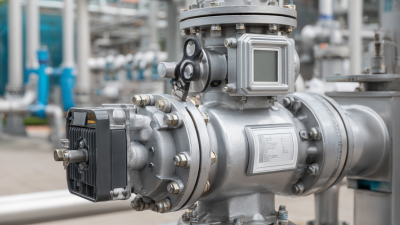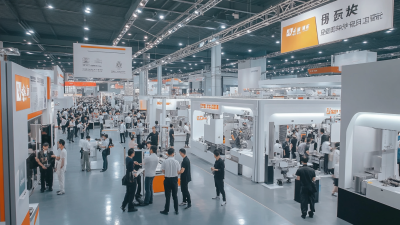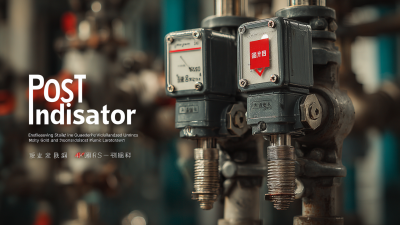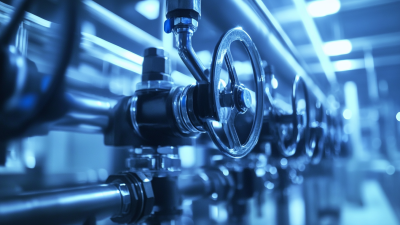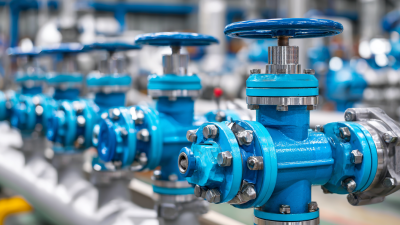7 Tips for Optimizing Valve Actuator Performance to Improve Industrial Efficiency by 30%
In today's rapidly evolving industrial landscape, the optimization of valve actuators is vital for enhancing operational efficiency and achieving substantial cost savings. According to the 2022 report by the International Society of Automation, industries can increase their overall performance by up to 30% through the effective management and upgrading of their valve actuator systems. These devices play a crucial role in controlling the flow of materials and maintaining system pressure, making their performance paramount in ensuring seamless operations. As manufacturers seek to mitigate downtime and increase productivity, focusing on the optimization of valve actuators not only contributes to improved efficiency but also enhances the longevity and reliability of the entire system. This blog will provide seven actionable tips that can help professionals boost their valve actuator performance, aimed at achieving these industry-leading efficiency gains.

Understanding the Role of Valve Actuators in Industrial Processes
In modern industrial processes, valve actuators play a pivotal role in ensuring operational efficiency and reliability. These devices are responsible for controlling the flow of fluids within pipelines and systems, making them crucial in environments such as oil and gas production, water treatment, and chemical manufacturing. According to the "2019 Valve Actuator Market Report" by Grand View Research, the global valve actuator market is projected to reach USD 2.7 billion by 2025, reflecting a compound annual growth rate (CAGR) of 6.9%. This growth underscores the increasing demand for reliable and efficient automation solutions in industrial settings.
Moreover, studies have shown that optimizing valve actuator performance can lead to significant enhancements in process efficiency. A report from the International Society of Automation indicates that well-maintained valve actuators can improve system efficiency by up to 30%. Proper actuator calibration, maintenance routines, and the adoption of smart technology can mitigate issues like valve sticking and response delays, thus ensuring precise control of flow rates. As industries strive for greater efficiency and sustainability, understanding the critical role of valve actuators becomes essential for capitalizing on their full potential in industrial processes.
Key Performance Indicators for Effective Valve Actuator Optimization
 Optimizing valve actuator performance is crucial to enhancing industrial efficiency. One of the key performance indicators (KPIs) to consider is the response time of actuators. According to a report by the International Society of Automation, improving actuator response time by just 20% can lead to a 15%% increase in overall system efficiency. This metric highlights the importance of ensuring that actuators can react swiftly to control signals, thereby minimizing delays in processes that rely on precise flow management.
Optimizing valve actuator performance is crucial to enhancing industrial efficiency. One of the key performance indicators (KPIs) to consider is the response time of actuators. According to a report by the International Society of Automation, improving actuator response time by just 20% can lead to a 15%% increase in overall system efficiency. This metric highlights the importance of ensuring that actuators can react swiftly to control signals, thereby minimizing delays in processes that rely on precise flow management.
Another important KPI is the energy consumption of valve actuators. Research from the Energy Efficiency Industrial Initiative indicates that optimizing actuator design and operation can reduce energy usage by up to 25%. By monitoring energy consumption effectively, industries can identify underperforming actuators and implement necessary adjustments, leading to significant cost savings and reduced environmental impact. Tracking these KPIs and employing targeted optimization strategies not only contributes to improved actuator performance but also propels broader industrial efficiency improvements.
Techniques for Regular Maintenance to Enhance Actuator Longevity
Regular maintenance of valve actuators is vital for enhancing their longevity and ensuring optimal industrial efficiency. According to a report by the International Society of Automation, maintaining components such as valve actuators can reduce unexpected failures by up to 40%. This not only minimizes downtime but also contributes to a smoother operational cycle, as poorly maintained actuators can lead to inefficiencies that escalate operational costs.
Implementing a routine inspection schedule helps identify wear and potential issues early on. For example, a study published by the American National Standards Institute highlights that regular lubrication and cleaning of actuator components can extend their lifespan by over 50%. This proactive approach not only improves actuator reliability but also ensures compliance with industry standards, ultimately driving better performance across manufacturing processes. By prioritizing regular maintenance, industries can achieve significant cost savings, potentially improving overall efficiency by up to 30%, aligning with modern operational goals for sustainability and productivity.

Integrating Advanced Technologies for Real-Time Performance Monitoring
In today’s fast-paced industrial environment, integrating advanced technologies for real-time performance monitoring of valve actuators is crucial for achieving optimal efficiency. Utilizing modern sensors and IoT devices allows for continuous data collection on actuator performance, leading to immediate insights into operational inefficiencies. With real-time monitoring, companies can identify and address potential issues before they escalate, reducing downtime and maintenance costs, and ultimately enhancing productivity.
Moreover, advanced analytics can transform raw data into actionable intelligence. By employing machine learning algorithms, businesses can predict valve performance trends and optimize control strategies accordingly. This proactive approach not only boosts the longevity of valve actuators but also ensures that systems operate at peak efficiency. As industries aim for a 30% improvement in performance, leveraging these technologies becomes not just beneficial but essential, paving the way for smarter, more resilient manufacturing processes.
Valve Actuator Performance Optimization Analysis
Training Staff for Optimal Operation and Management of Valve Actuators
Effective management of valve actuators is essential for optimizing industrial processes and achieving greater efficiency. One of the most critical factors in ensuring the optimal operation of these devices is comprehensive staff training. By equipping personnel with the knowledge and skills required to operate and maintain valve actuators, companies can reduce downtime and improve overall system reliability. Training programs should cover both theoretical and practical aspects, including the mechanics of actuators, troubleshooting techniques, and best practices for preventive maintenance.
Moreover, fostering a culture of continuous learning further enhances staff competence. Regular workshops and hands-on training sessions can keep employees updated on the latest technologies and operational strategies. Encouraging cross-training among team members can also enhance versatility, enabling staff to respond effectively to various challenges that may arise in the field. By investing in workforce development around valve actuator management, businesses not only increase their operational efficiency but also empower employees to take ownership of their roles, leading to a more engaged and productive workforce.
7 Tips for Optimizing Valve Actuator Performance to Improve Industrial Efficiency by 30%
| Tip Number |
Tip Description |
Expected Impact (%) |
Training Required |
Implementation Time (weeks) |
| 1 |
Regular Maintenance Checks |
10 |
Basic Maintenance Training |
2 |
| 2 |
Use of Smart Sensors |
15 |
Advanced Sensor Training |
3 |
| 3 |
Control System Optimization |
20 |
Control Systems Training |
4 |
| 4 |
Energy Consumption Monitoring |
12 |
Energy Management Training |
3 |
| 5 |
Integration with IoT |
18 |
IoT Integration Training |
5 |
| 6 |
Data Analysis and Reporting |
14 |
Data Analysis Training |
4 |
| 7 |
Automated Fault Detection |
25 |
Fault Detection Training |
6 |


 Optimizing valve actuator performance is crucial to enhancing industrial efficiency. One of the key performance indicators (KPIs) to consider is the response time of actuators. According to a report by the International Society of Automation, improving actuator response time by just 20% can lead to a 15%% increase in overall system efficiency. This metric highlights the importance of ensuring that actuators can react swiftly to control signals, thereby minimizing delays in processes that rely on precise flow management.
Optimizing valve actuator performance is crucial to enhancing industrial efficiency. One of the key performance indicators (KPIs) to consider is the response time of actuators. According to a report by the International Society of Automation, improving actuator response time by just 20% can lead to a 15%% increase in overall system efficiency. This metric highlights the importance of ensuring that actuators can react swiftly to control signals, thereby minimizing delays in processes that rely on precise flow management.

